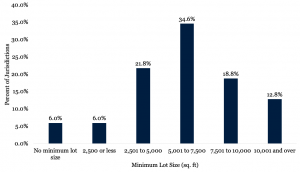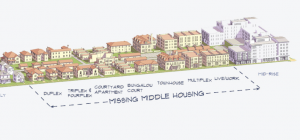As the housing crisis in California has increased in severity, the state legislature has been introducing and passing a number of bills to relax the regulations on zoning laws and land use. One of the main focuses has been to spark small developments, or middle housing. SB 478 is a bill that was introduced in 2020 and passed the state Senate on May 26th and has been passed along to the Assembly for consideration. If the bill passes in the Assembly, it will then be sent to Governor Newsom to be signed into law.
What does SB 478 do?
While some lots can be zoned for an increased number of units, many cities throughout California have restrictions when it comes to how much square footage can be built on a lot. This can effectively make a multifamily lot a single family lot. If SB 478 is signed into law, it would force cities to increase the minimum amount of square footage, or floor area ratio, on a lot.
This would apply for lots zoned for duplexes and up to 10 units. The bill would also set a minimum lot size for multifamily lots zoned for duplexes and up to 10 units. SB 478 would have a similar impact for multifamily lots that recent accessory dwelling unit laws did for single family lots.
How many properties would be impacted?
Not every city implements restrictive floor area ratio rules. There’s a chance your multifamily lot won’t be impacted by SB 478. According to the Terner center of the 53 cities that had restrictions for floor area ratio, only 8 of the cities have standards that wouldn’t be impacted by the bill. While not every city uses rules about floor area ratio, most do have minimum lot sizes. Those with minimum lot sizes higher than what the bill proposes would be impacted and could no longer deny middle housing developments because of lot size

What is middle housing?

When most people think of housing they think of either the suburbs or high density major cities with mid-rises and high-rises. Middle housing is smaller developments like duplexes, fourplexes, and small apartment complexes. This creates more affordable housing by sharing land costs and putting more small units on each lot. This is ideal for people who want to live in a neighborhood as opposed to a big city. Right now California has a lot of high density urban centers and single family suburbs, and what is missing is middle housing. These types of properties aren’t attractive to larger developers because of the smaller sizes of the lots.
Conclusion
SB 478 wouldn’t be a huge change in the state of California, but it would have a big impact for smaller real estate businesses who want to develop middle housing and rent out more units. As with many of the bills over the last few legislative sessions, it is designed to chip away at the restrictions and delays that prevent housing from being built in a timely fashion that also meets the local demand.
One of the authors of the bill, Scott Wiener described it as a “wonky” type of “housing nerd concepts” which “are actually profoundly important because these are two issues and two strategies that sadly, far too many cities use to make it impossible to build multi unit housing.”
Commentary
My great grandpa came to the United States without a penny to his name in the early 1900’s. He lived and worked in San Francisco saving up every dollar he earned and invested it in smaller apartment complexes throughout the city. By doing this, he eventually worked his way up to developing large commercial real estate and strip malls throughout the bay area. The business has now lasted three generations and has been passed on to his grandson.
Without middle housing, growing a real estate business can be difficult as it is an important stepping stone to larger developments. The cost of entry for large scale housing and commercial developments can shut most people out, but middle housing can be an opportunity to work towards even larger projects.

